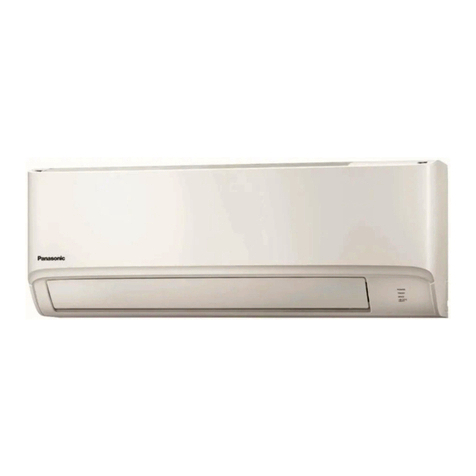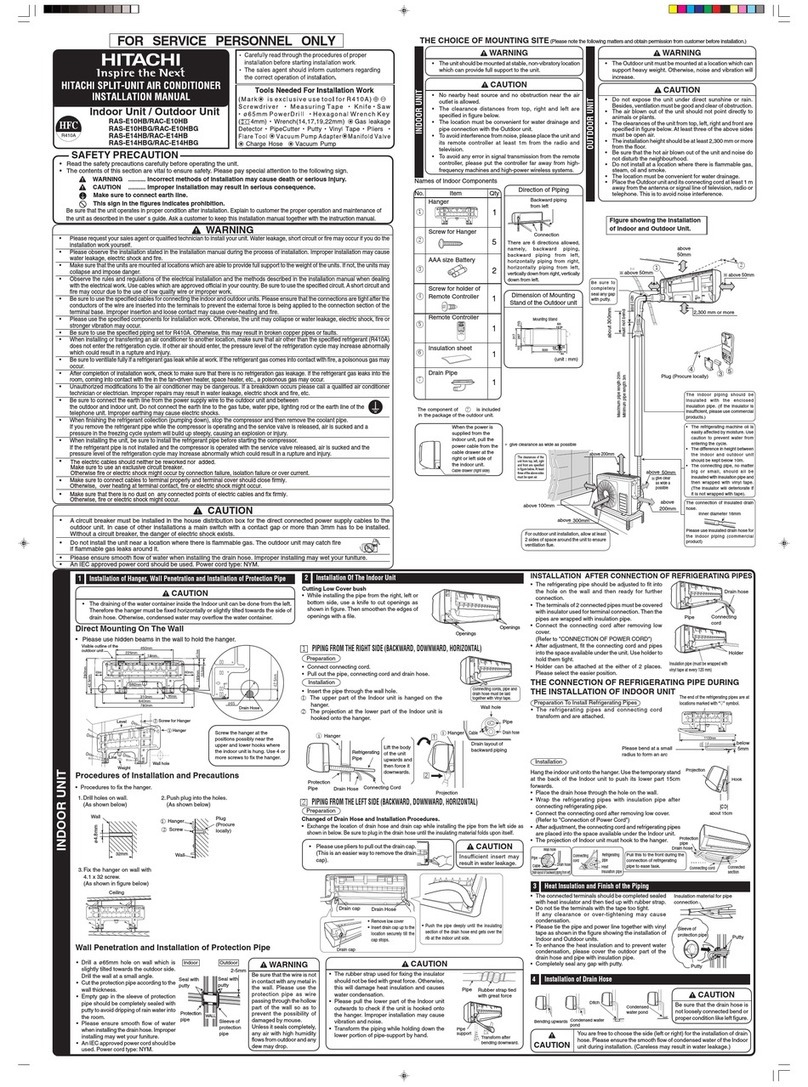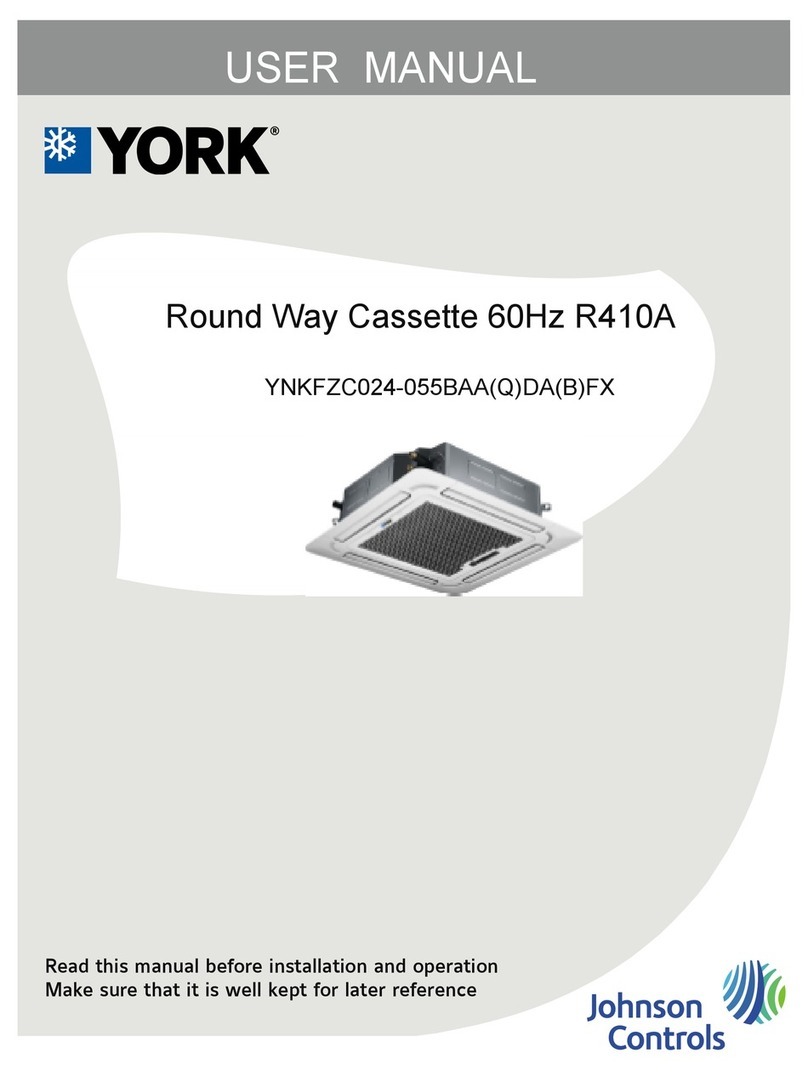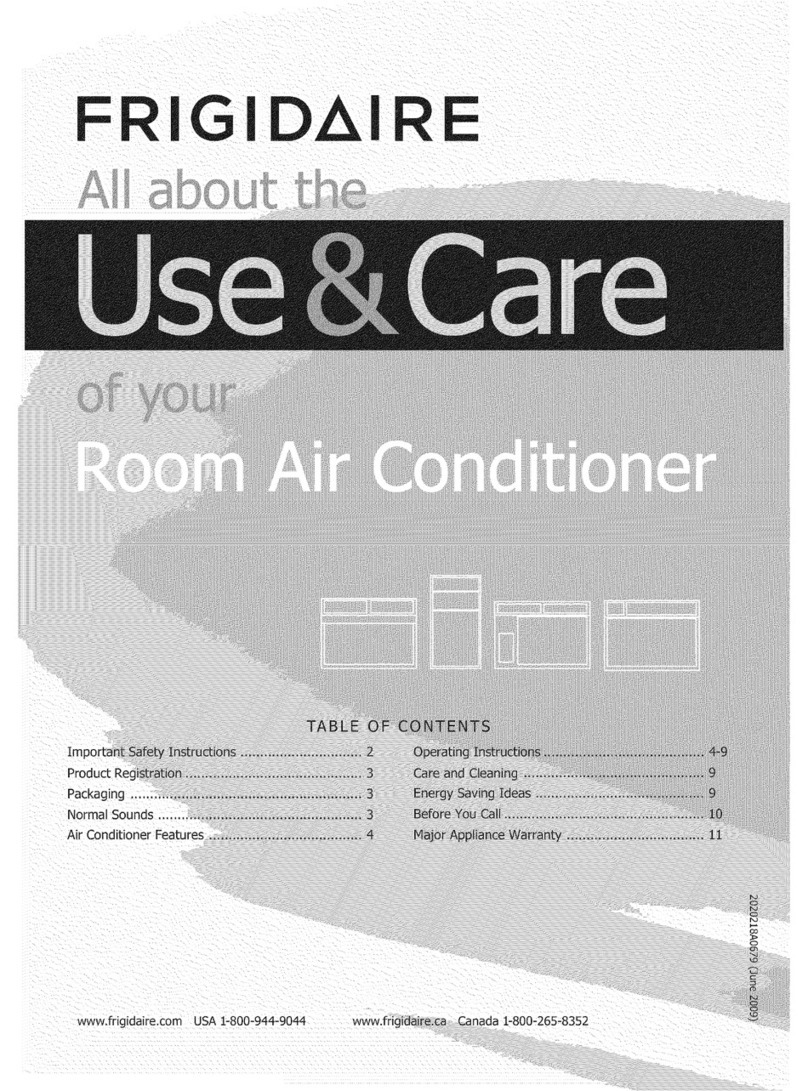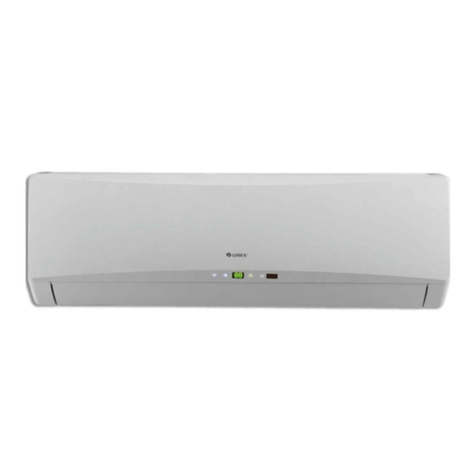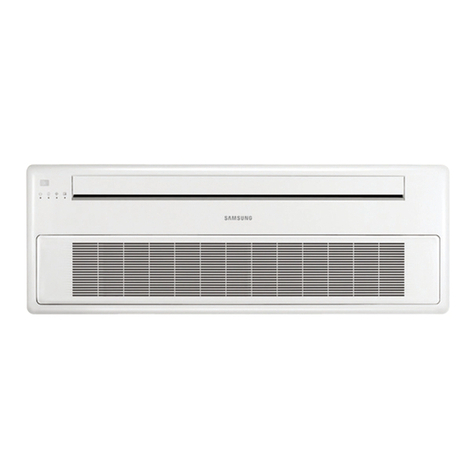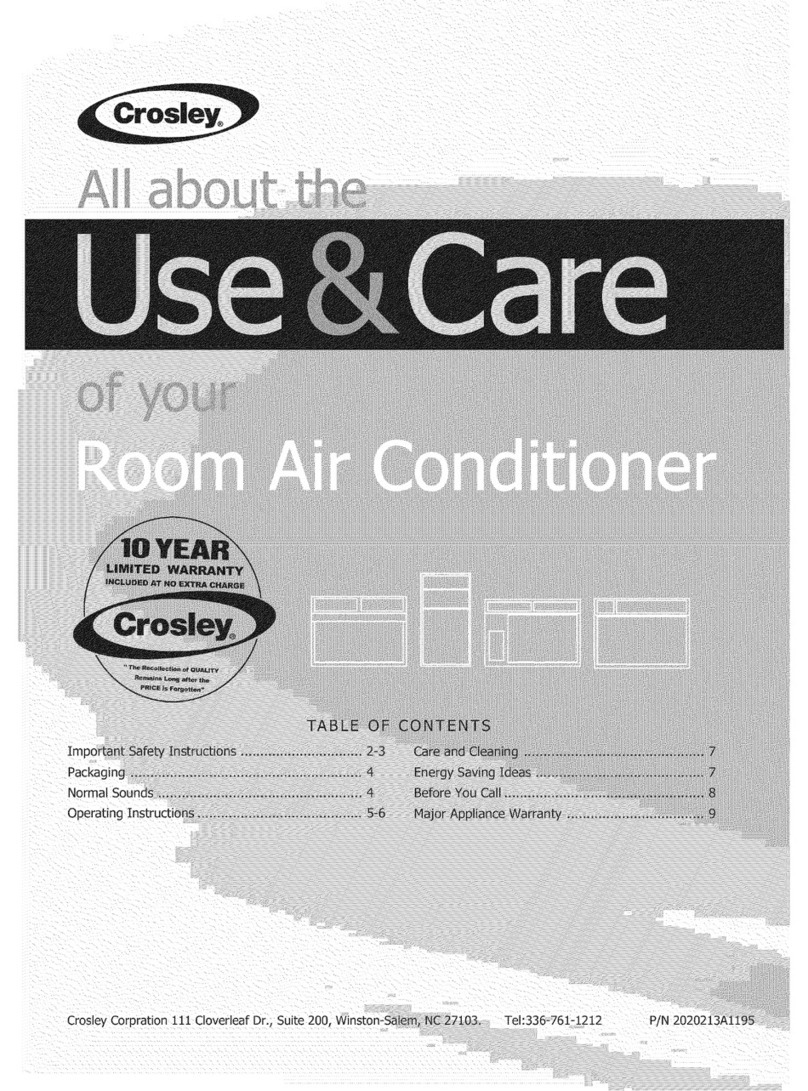Deekax Talteri DIVK-700DE VKL User manual

THE QUALITY OF INTERIOR AIR is measured by health, enjoy ability and cost-effectiveness.
AIR EXHANGE EQUIPMENT
INSTALLATION AND USER MANUAL
THE QUALITY GOALS OF AIR CONDITIONING COME TRUE WITH THE
RECOVERY SYSTEM
TALTERI removes used air from interior and brings in fresh air. Humidity and
impurities are exhausted through thermal recovery unit that heats the filtered
ambient air cost-effectively. The fresh warm air is channelled draught-free and
noise-free into the premises in necessary quantities.
ENSURE THE QUALITY OF AIR EXCHANGE!
QUALITY CONTROLLED
DIVK
-
700DE AND DIVK
-
700DE VKL

2
OUTDOOR AIR
EXTRACT AIR
SUPPLY
AIR
EXHAUST AIR
BATH
ROOM
BED
ROOM LIVING
ROOM OVEN KITCHEN
WALK-
IN CLO-
SET
UTILITY
ROOM
Figure
1
:
system components
The household air exchange systems are classified into five quality categories. By the category means you can choose
the level suitable for you (A= *****-stars ... E= * -star). From the quality level C = *** - you have to use air exchange
system equipment and parts. The goal numbers will be achieved only by quality monitoring.
TALTERI system with thermal recovery unit will enable better quality levels
SYSTEM COMPONENTS
Figure 1
1. Heat recovery ventilator (HRV). DIVK -700
2. Exhaust fan hood……… DX-ULTRA-PT
Exhaust hood……………. DLT-150
3. Exhaust air outlet………DLVS-200/435
4. Duct silencer…………………… Ø200
5. Extract air to the heat recovery
ventilator …………………. …... Ø200
6. Fresh air intake from outdoors .Ø200(250)
7. Fresh air supply to the rooms..Ø200
MACHINEPARTSAND TECHNICAL DATA
1 Exhaust air out.......................200mm
2 Outdoor air for the system......200mm
3 Exhaust air for the system......200mm
4 Interior air supply....................200mm
5 Electricity connection
6 Main switches
7 Supply fan, adjustable…….EC 171W
8 Exhaust fan, adjustable......EC 171W
9 Heat exchanger equipped with a bypass damper
11 Exhaust/supply air filter....F5…F7
12 Exhaust of condensing water..... Ø 12 mm
13 Operating panel
16 Summer bypass appliance
THE QUALITY OF LIFE - PURE JOY FROM INTERIOR AIR
TALTERI HEAT RE
COVERY AIR VENTILATION SYSTEM
(HRV
)
POST
-
HEATING ELECTIC
10 Post-heating, adjustable...230V/2000W
15 Manual over heat protection
POST-HEATING WATER
17. Post-heating adjustable water battery
18. Post-heating actuator
19. Butterfly plate for the fresh air duct
Dimensions: height 950 mm, width 900
mm, depth 510 mm , weight 80 kg
Figure:
1
: Dimensions DIVK
-
700
“right”
“
left
”

3
EXTRACT AIR
FLOW Normal
operating
situation
Basic operating
situation
Kitchen 25 dm
3
/s 8 dm
3
/s
Bathroom 15 “10 “
WC 10 “7 ”
Clothing room 3 “3 “
Utility room 15 “8 “
Sauna 2 “/m
2
6 “/m
2
Hobby room 0.5 “/m
2
0.5 “/m
2
Bed rooms
or 0.5 “/m
2
6 “/person 0.5 “/m
2’
6 “/person
The airflow of the basic operating situation can be used only
if it is possible to increase the airflow in the with the control
valve to the level of the normal operating situation. A
separate exhaust valve is required near the ceiling in the
kitchen.
OUTDOOR AIR FLOW
Living room 0.5 dm
3
/s/m
2
Bed room 0.6 ““or 6 dm
3
/s/person
Dining room 0.5 ““
Hobby room 0.5 ““
Sauna 2 ““at least 6 dm
3
/s
To avoid damages caused by humidity the outdoor airflow has
to be at least 85 % of the exhaust airflow.
THE AIR EXCHANGE PLAN INCLUDES ATLEAST:
DRAWINGS-plans and sections(1:50)as well as installation
drawings(1:20).The drawings must include at least the location
of equipment and channels, measures, technical data, air flow
and operational chart. For air flow measuring, the installation
must be slightly under pressurized.
EQUIPMENT and QUANTITY LIST presents all work-
influencing mechanical details with detailed characteristics
(equipment list, noise reducers, fans etc).
INSTALLATION MANUAL describes installation procedures
for the central engine and equipment. Type approved machinery
has detailed installation instructions enclosed to the air
exchange plan.
WORK SPECIFICATION specifies contract limits and
timetable for the working order. Drawings, lists and installation
instructions define IV-work in detail and do not need to be
repeated. Work specification defines necessary testings,
measuring and basic adjustment with proceedings reports.
THE REQUEST FOR QUOTATION includes total pricing
considering on schedule installation according to the plan
payment conditions are also extremely important.
IMPLEMENTATION- AND MAINTENANCE TRAINING is
unavoidable before the work is ready for handover.
The channels for exhaust air and incoming air should be installed, if possible, in a warm space below the vapour
barrier to suspended ceilings or casing. The vapour barrier remains intact and the channels do not need heat insulation.
This also ensures that the airflow in the channels will not freeze due to poor heat insulation as well as there will be no
condensing. Cleansing of channels also becomes easier. The outside air and exhaust air channels are isolated under
warm conditions, see the instructions.
The channels are compiled of type-approved, rubber gasket parts and winded joint channel. Disconnections will be
removed for sealing and noise reasons. Connections will be secured with closing drawstrings and channels attached
securely to the framework with mounting strings so it will persist also cleaning.
Measuring- and regulation equipment of airflow are installed to exhaust channels after noise deductors and inflow
channels before the deductors. For cleansing, a cleansing hatch should be installed. Remember, that a good functioning
channel is: measured correctly, hermetic, carefully attached, properly isolated and with hermetic inlets!
THE SYSTEM IS ONLY AS GOOD AS IT’S WEAKEST PART!
AIR EXCHANGE PLAN
INSTALLING THE CHANNELLING

4
CHANNEL ISOLATION
Since the channels are mounted to the upper base, it must be carefully
isolated so that: humidity will not condensate on pipe surfaces, the air will
not freeze before heat has been stored, the heated incoming air will not
freeze before it is blown into interior.
The two main rules of channel isolation are:
The warm air channels are always isolated in outer conditions with at
least 10 cm of mineral wool and windscreen plating. The cold air
channels are always isolated in inside premises with 10 cm of mineral
wool and steam barrier plating, for instance AE-chase or AIM-mat.
(Figure 2)
CHANNELS OF OUTSIDE- AND EXHAUST AIR
The outside air will be obtained through 200 mm grate without an
insect net. The air inlet will be situated to as clean space as possible, far
from the refuse discharge, smokestack, ventilation outlet and exhaust air
tube. The air inlet will be located to a height of at least 2 meters from
ground on the northern side of the building, opposite side to the traffic.
Due to warm summer weather, the outlet channel has to be thermally
isolated in a loft space. Outgoing exhaust air will be channelled above the
rooftop through well-isolated channel and by 700-900mm high isolated
roof duct. (Figure 3).
Fireplaces like hearths, ovens and sauna heating systems must have
a separate isolated combustion air channels with slide coping.
INSTALLATION OF VENTS
Income and outlet vents are installed according to the plan. Special
attention is needed while installing income valve since a wrong vent in a
wrong place and wrong mounting will affect the air draught and reduce
satisfaction.
Steam barriers are well tightened.
In saunas, the income air is channelled above the sauna stove and
outlet will be taken from underneath the sauna platform. The sauna vents
are manually adjustable.
In kitchens, the outlet appliance should be the stove hood with
adjustment plate of three positions and an airflow gauge. The exhaust
vent is operated by the means of the adjuster. The kitchen exhaust will be
attached to the air exchange unit.
In case sound isolation is needed between the separate rooms,
cushioned air transfer vents are used, figure 4. Air transfer routes in
doorways and under the doors will greatly reduce the privacy.
Mi
nimum insulation thickness for
the duct
, mm
Duct
size
Figure 3: Outside and exhaust air inlets.
Figure
2
Channel isolation
Figure 4: Supply and transfer air vents
.
Temperature difference between the
inside and outside air of the duct.
mineral wool
mineral wool
blowing wool
steam barrier
roof struss

5
The air exchange unit is meant for warm inner facilities. Suitable installation spots are, among others, office, dressing or
household facilities and technical or warm storages. In case the temperature of the installation location is lower than room
temperature, the factory settings of the appliance must be changed to obtain faultless functioning. The unit can not be
installed into cold outer premises or garages. Exhaust of condensing water proceeds through a water-sealed joint hose
into a washing basin or “dry”floor well. Check the horizontal position of the unit and free flow of the condensing water.
The unit can be mounted on a wall with corner trims, which should be attached with M8 screws to the rivet nuts on the
sidewalls of the unit. To install the unit on the floor, attach the 150 mm high plinth legs (available as accessories) to the
bottom of the unit with M8 screws. Raising the unit above the floor leaves space for the condensate water hose and the
power cord. The unit can be attached also to the ceiling with threaded bars or with plinth legs, which should be attached
to the rivet nuts on the top of the unit.
The outlet hose of condensing water has readily installed
water-sealed rising joint that can be taken right into the wall
sewerage. Check that the hose is not pressed together.
There must be only one water-sealed joint between the
appliance and sewerage.
Electrical connections must be done following the
installation manual and wiring scheme.
ELECTRICAL CONNECTIONS CAN BE DONE ONLY BY
AN ENTREPRENEUR WITH RESPECTIVE
INSTALLATION RIGHTS.
Electrical connection box can be opened from the front
side below the unit by removing the screws beneath the
locking covers. The connection box slides out by pulling it
forward up to the end stop guide.
DIVK-700 DE is connected to an electrical socket with a
3x2,5 power cord. If the unit is equipped with a pre-heater,
a 4x2,5 power cord should be used instead of a 3x2,5
power cord.
The cable connecting the unit to a pre-heater is coming
from the unit's electrical box through the bottom entry of the
unit located near its backside
The operating panel is connected to the control board by
modular connector.
The following can be connected as accessories:
- Carbon dioxide transmitter
- Humidity transmitter
- Separate Overload or Extended Period switch
(pulse switch)
- Separate Boost switch (pulse switch) or setting off
as pre-data (for instance, sauna oven, stove hood)
- Remote control or out-of-home switches (pre-data)
- Differential pressure switches for filters
- Outside pre-heating
The functions can be operated through maintenance -
and setup menus of the operating panel.
ELECTRICAL CONNECTIONS
TALTERI DIVK-700 INSTALLATION
OVER-
PRES-
SURE/
EXTEN-
DED
TIME
BOOS
-
TING
UN
-
OC-
CU-
PIED/
RE-
MO-
TE
FIL
-
TER
COO
-
LING
WATER
BATTERY
WIN-
TER
SUM-
MER
ALARM
LTO
-
bypass
Distripution board
DIVK-700 DE
Figure 5: Electrical connections

6
DIVK-700 DE
Electrical diagram
KEVI
2A
1A 5B4B
SWITCH
ON-OFF
( IU ) LN
TRIAC
PRE
NL
N
L
Accessories
3x1,5
DIVK-700DE VKL
N
L4 3
230 N
24
0
0-10v
0v
24vac
transformer
230/24
Electrical diagram
0-10v
0v
24vac
red
blue
black
VS+ GND RH
G+ G0 OUT1
CO2 sensor
1
-2
+3
+
Belimo LM 24
Accessories
summer
bypass
+24 0 0-10
CO2/%RH1
+24 0 0-10
CO2/%RH2
O VER-
PRESSURE/
EXTENDED
TIME BOOSTING
0-10+24 0 0-10
CO OLING
+24 0
WATER
BATTERRY
FIL TER
+24 0
LTO BYPASS
WINTER
YHT
SUMMER
T1 T2 T3 T4 T5 T6
PRE-
HEATER
POST-
HEATER
230VAC
L N PE
FUSE
Control
board
ECU
ALARM
NC
YHT
NO
R
2A 1A5B 4B
SWITCH
ON-OFF
N
TRIAC
POST
TRIAC
PRE
RESISTOR
OVERHEAT
PROTECTOR C
2
VS+ GND RH
G+ G0 OUT1
CO2
SENSOR
HUMIDITY
TRASMITTER
PRE-HEATER
(DUCT)
L
N
DISTRIBUTION BOARD
10A
16A
4x 2,5 ,if pre-heater is connected
3x1,5
1
-2
+3
+
Belimo LM 24
Pulse
switch
Switch
Accessories
summer
bypass
Electronics enclosure
LLL3
N
N2 L2 1
45 6
4
3
3x2,5
+24 0 0-10
CO2/%RH1
+24 0 0-10
CO2/%RH2
0-10+24 0 0-10 +24 0+24 0
LTO BYPASS
WIN-
TER
YHT
SUM-
MER
T1 T2 T3 T4 T5 T6
FRESH SUPPLY EXTRACT EXHAUST WATER
PRE-
HEATER
POST-
HEATER
CONTROL
PANLEL
230VAC
L N PE
FUSE
TEMPERATURE
SENSORS
CONTROL
BOARD
ECU
ALARM
NC
YHT
NO
R
Pulse
switch
switch
Boosting
set value 0
pre-data
Alter-
native
SUPPLY
FAN
EXHAUST
FAN
KEVI
0-10 0-100 0
SUPPLY/ EXHAUST
N NU U
KEVI
s
s
K
K
N3 2 1
K
S
N3 2 1
K
S
N3 2 1
K
S
N3 2 1
K
S
SUPPLY
FAN
KEVI
EXHAUST SUPPLY
0-10 0-100 0
SUPPLY/EXHAUST
N NU U
s
s
K
K
N3 2 1
K
S
N3 2 1
K
S
N3 2 1
K
S
N3 2 1
K
S
EXHAUST SUPPLY
DIFFE-
RENTIAL
PRES-
SURE
SWITCH
OVERP-
RESSURE/
EXTENDED
TIME BOOSTING
UNOCCU-
PIED/
REMOTE FILTER COOLING WATER -
BATTERY
EXHAUST
FAN
PRE-HEATER
(DUCT)
Input
230V,
50 Hz
10 A
-power
cord
(plug)
Electronics enclosure
UNOC-
CUPIED/
REMO-
TE
CONTROL
PANEL
TEMPERATURE
SENSORS
FRE SH SU PPLY EXTRACT EXHAUST WATE R
HUMIDITY
TRANSMITTER
pulse
switch
pulse
switch
switch
switch
differential
pressure
switch
alter-
native
BOOST
Set value 0
Pre-data
waterbattery
acctuator
DANFOSS
ABNM 0-10v
Figure
6
: Electrical diagram.

7
Table 1: Water battery sizing chart
water battery sizing chart
coming
water
return
water
water flow
air flow
rise of the
temperature
total power
70c
40c
108l/h
80l/h
-
5/38
4.1 kW
70c
34c
108l/h
120l/h
-
5/30
5.0 kW
50c
28c
108l/h
80l/h
-
5/27
3.1 kW
50c
24c
108l/h
120l/h
-
5/21
3.7 kW
35c
23c
108l/h
50l/h
-
5/23
1.7 kW
35c
22c
108l/h
60l/h
-
5/21
1.9 kW
Operator panel bezel removal
With water battery (VKL) installation it should be observed
- The designing must consider temperature of used water and sustainability of the heating power under
rated conditions. - Water, reaching the appliance,must be pre-regulated after leaving the boiler.
- Post-heating battery is switched to the appliance from inside by a respective copper or plastic hose.
- The water flowing into the heating battery is connected to the operating appliance (3/8 female screw)
that regulates the water flow into the battery.
- The return water of the battery is connected by 10mm pressure-connector and air fan is mounted to
the highest point of the hose.
- Locking fans are mounted to the outlet as well as return hoses.
- The water battery is equipped with an anti-freeze thermostat that stops the inlet air impeller in
case the temperature of the water battery decreases below the limit value (approximately +10c). In such
a case the self-powered butterfly plate also closes and prevents the cold outside air from entering into
the battery. The axel of the butter fly plate must be in a vertical position.
Figure
7
:Operator bezel removal
DIVK-700 DE VKL 4RO(RIGHT HANDED)
DIVK-700 DE VKL 4RV(LEFT HANDED)

8
SOUNDVALUES
Fan speed %
Input power of fans W
Total output
Hz
63
125
250
500
1000
2000
4000
8000
40
20
24
E
36
38
32
27
24
19
*
*
28
S
43
42
40
42
41
34
24
11
43
50
49
29
41
43
36
32
30
26
13
*
40
50
46
49
49
43
34
19
50
60
75
34
45
47
42
37
34
32
18
*
44
53
52
50
52
54
50
43
28
56
70
116
38
48
51
45
41
38
36
23
11
43
56
56
55
56
57
55
49
35
60
80
181
41
50
53
49
44
41
39
27
13
46
58
58
58
60
60
53
41
64
LWA
90
255
44
54
57
52
47
44
43
32
23
49
60
61
61
62
63
64
57
46
67
100
308
46
55
58
54
49
46
44
34
21
51
62
62
62
63
64
65
59
48
69
48 58
Airflow E/S 187/181
170/165148/142120/10587/77
65/5840/35
100%
qV
AIRFLOW
Pa
200
100
100
DIFFERENTIAL PRESSURE
ACROSS TH EUNIT
tuloilma
50 150 200
90%
80%
70%
60%
50%
40%
100%
qV
AIRFLOW
Pa
200
100
100
50 150 200
90%
80%
70%
60%
50%
40%
qV
AIRFLOW
Pa
200
100
100
50 150 200 l/s
40%
50%
60%
70%
80%
90%
100%
l/s
l/s
INPUT POWER OF FANS W
150
250
300
350
50
SUPPLYAIRF/ EXTRACTAIR F5
AIRVOLUMES
Soundpressurelevel ininstallation
premises dB(A)
Value of rotating speed can be
chosen for each fan individually
within the range of 20-100%
viaEC SPEEDS submenu of the
service menu on the control
panel.
DIFFERENTIAL PRESSURE
ACROSS TH EUNIT
ESESESESESES
Weighted
sound pressure
levels
LWof exhaust(E)
and
supply(S) ducts
on different
octave bands
Figure
8
Air flow and sound pressure values

9
BEFORE OPERATING YOUR AIR EXCHANGE
SYSTEM, MAKE SURE THAT:
- There are no loose objects within the unit or the air
impeller. Screws or any other objects inside the fans
can cause damage when the unit is switched on;
- flexible mounting of fans is used to ensure their free
swinging ;
- The coverings of construction-time are removed from
the outlet- and exhaust air holes.
- All isolations and steam barriers are in order;
- heat exchanger is in place and the summer bypass
plate is in the winter position: air is flowing through the
heat exchanger and the bypass tunnel behind the heat
exchanger is closed;
-filter bags are in place and tightly secured with springs
to the silicon sealing to avoid a bypass flow;
-noise deductors are in place in the pressure chambers
located above the fans;
- The condensing water outlet is installed and the water
is drained out; test it by pouring small amount of water
in the condensate basin;
- The air impellers and their adjusters are in working
order
- Post-heating is regulated and working Ensure that the
overheat protector is reset if it has been activated;
-necessary settings have been configured through the
maintenance and settings menu on the unit's control
panel.
USAGE DURING INSTALLING
The air exchange unit should be started as soon as
installation permits. Efficient air exchange promotes
drying of the constructions and prevents damage. In
case channeling has not been completed, fans and
adjustments are missing, filter paper must be used in
place of fans to keep the channels clean and provide
sufficient counter pressure preventing overload. The unit
must be used with full power and check the drainage of
the condensing water. The appliance, filters and heat
exchangers must be cleaned and the system adjusted
after the construction works are completed. The inner
painted walls of the unit are easy to clean
BASIC ADJUSTMENT OF AIRFLOW
The unit alone can not produce good interior ear in case
the channels and fans are installed carelessly and main
adjustments are not made. Regulate the inlet and outlet
fans to the planned positions and start the unit at design
power speed. Measure the airflow in outside- and
exhaust air channels. The outlet must be 10-15% higher
than inlet. Check the pressure level of the channels by
checking from the fans and adjust it accordingly to obtain
the pressure level of 10-30 Pa for fans adjust and lock
the pattern. Draw measuring- and adjustment records!
USAGE AND CORRECT LEVEL OF AIR EXCHANGE
The air exchange level is regulated by changing the
working speed of the air impeller from the operating
panel. Airflow of different adjustable positions can be
seen from figure 5.
Adjustable position 1 is for basic air exchange for an
empty house.
Adjustable position 2 and 3 are normal working
positions.
Adjustable position 4 and 5 are efficiency positions (i.e.
for saunas).
The correct usage positions will be found by experience
observing the purity of the air or sultriness when coming
in from outside, observing moisture on the windows or
drying of the sauna.
POST-HEATING AND SUMMER BYPASS OF INLET
AIR
DIVK-700 DE is equipped with 2000W electrical battery
operated by the means of TRIAC-adjuster or a water
battery (VKL) operated by the operating device for post-
heating the heat recovered inlet air.
The temperature of inlet air is usually regulated to +16C.
The temperature may be adjusted to higher during
winter so there would be no draught like feeling. In case
of severe frost and efficiency mode the heating power
might turn out insufficient in such circumstances, the air
exchange should be reduced .
The overheat protection has been activated in case the
barrier temperature has risen +90 C (for instance, in
case of power failure). Reset the overheat temperature
by pressing the switch under the threaded contact
protection.
During summertime, the Ito-exchanger element on the
bypass plate will be closed so the exhaust air will not
warm up the inlet air.
For summer time it is recommended to install EU.7 bag
filter, which efficiently filters pollen and other fine
particles among others.
INTRODUCTION OF THE AIR EXCHANGE

10
CONDENSING WATER AND FREEZING PREVENTION
When outlet air freezes, the humidity in Ito-exchanger
turns into water, flows down to the condensing basin and
from there, through the hose and water trap, into the
open drain. During very cold weather the water would
freeze into the exchanger unless the anti-freezing
thermostat stops the inlet air impeller for the fusion
period. During severe cold, the inlet air impeller will work
in cycles. Under extreme conditions (humidity /harsh
cold) the Ito-element may freeze over and the anti-freeze
protection series are not able to defrost it. If such a case
occurs, the machine has to be stopped, opened and the
cold flow stopped and the ice given the necessary time
to melt. Check the drainage of condensed water!
””Waste air cold”setting of the freeze protection
thermostat can be adjusted through the service menu
on the unit's control panel.

11
LED OPERATION REASON
BLINGIN RED
RED
YELLOW
GREEN
SENSOR FAULT
RETURN WATER GOLD
INCOMING AIR GOLD
INCOMING AIR HOT
FILTER PRESSURE-
CAP SWITCH
MAINTENANCE INTERVAL
REMINDER
WASTE AIR COLD
OUT-OF-HOUSE SWITCH
OVERPRESSURE ACTIVATED
INTENSIFICATION ACTIVATE
co2/RH INTENSIFICATION ACTIVATE
WASTE AIR COLD
PRE-HEATING ACTIVATE
AFTERHEATING OR
AFTERCOOLING ACTIVATED
-
MO 13.50
PRESSURE COMP.
OFF MO 13.50
OVER PRESSURE
BOOSTING
OFF
AFTER HEATER
ON
MO 13.50
BOOSTING
MO 13.50
OPERATING PANEL
USER INSTRUCTIONS
MAIN DISPLAY AND ADJUSTMENT OF BLOWING SPEED
CLOCK
THE DISPLAY ALSO
SHOWS POSSIBLE
INCREASED EFFICIENCY AND
MALFUNCTIONS
HUMIDITY AND CARBON
DIOXIDE VALUE
IF SENSORS ARE INSTALLED
(accessory equipment)
TEMPERATURE DISPLAY FOR
TEMPERATURE OFOUTSIDE AIR,
INCOME AIR, OUTLET AIR AND
EXHAUST AIR
ACCURACY OF TEMPERATURE
SENSORS +2c
BLINGIN YELLOW
BLINGIN GREEN
ACTIVATING/DEACTIVATING OVERPRESSURE, INTENSIFICATION AND AFTERHEATING
PRESS
PRESS
PRESS
PRESSURE COMP.
OFF
PRESSURE COMP.
ON
BOOSTING
OFF
BOOSTING
ON
AFTER HEATER
ON
AFTER HEATER
OFF
R
MO 13.50
OUT 10
EXH 21 INLET 18
WASTE10
2
RH 60 %
CO2 850 ppm
MO 13.50
FUNCTIONS
R
SETTINGS
R
R
R
R
BACKEDIT
SET
MUOKKAA
SELECT
MO 13.50
R
FUNCTIONS
FUNCTIONS
FUNCTIONS
FUNCTIONS
SETTINGS
SETTINGS
SETTINGS
EDIT EDIT
SET
BACK
BACK
BACK
BACK
FUNCTIONS SETTINGS
SETTINGS
SETTINGS
SETTINGS
SETTINGS
SET
BASIC SETTING 2
FAN SPEED
BASIC SETTING 2
FAN SPEED
BASIC SETTING 2
FAN SPEED
FAN SPEED
FAN SPEED
R
FUNCTIONS SETTINGS
FUNCTIONS
BACK EDIT
FUNCTIONS
BACK EDIT
FUNCTIONS
BACK EDIT
FUNCTIONS
BACK EDIT
FUNCTIONS
BACK EDIT
FUNCTIONS
R
FUNCTIONS SETTINGS
EDIT
BACK EDIT
FUNCTIONS
BACK EDIT
FUNCTIONS
EDIT
R
FUNCTIONS SETTINGS
R
FUNCTIONS SETTINGS
BACK
FUNCTIONS
SET
BACK
FUNCTIONS
SET
EDIT

12
M0 13.50
TEMPERATURES
FACTORY SETUP
ERROR LIST
WEEK CLOCK
TIME
SUMMER BYPASS
CO2 AND %RH
BOOSTING
PRESSURE COMP.
FAN SPEED
MAINTENANCE
MENU LANGUAGE
Selecting language suomi, svenska, english or eesti
SETUP MENU
Maintenance interval and reset
Display sensor and overheating faults, temperature deviations, filter exchange and starts
Fault list reset
Air exchange can be reduced/increased during selected time periods.
5 different periods can be programmed. Each time period can be set for one or several weekdays.
In office-mode, the unit stops for the period out of selection and display reads standby.
Weekday and clock selection
Operating the summer bypass. The user of the unit can set the bypass plate manually to
SUMMER/WINTER or AUTOMATIC mode
In summer mode the bypass plate is activated
During the automatic mode, the plate works according to outside temperature. Set value 15...20c
The automatic mode has adjustment amplitude of approx 2 hours
CO2 transmitter ON/OFF switching. Setting of CO2 upper limit. Set value 250...1500ppm, 50ppm steps
%RH transmitter ON/OFF switching. Setting of RH upper limit. Set value 30...80%, 5% steps
Regulating amplitude 5...20min
Regulation of inlet air afterheating set value 1 5...30c
Set value of intensification duration 0 and 5...120min. In 0 position different switch
Set value of overpressure duration time (hearth switch) 5...30min
Fan speed adjustment 1....5
R
FUNCTIONS SETTINGS
SELECT
BACK
SETTINGS
SELECT
BACK
SETTINGS
SELECT
BACK
SETTINGS
SELECT
BACK
SETTINGS
SELECT
BACK
SETTINGS
SELECT
BACK
SETTINGS
SELECT
BACK
SETTINGS
SELECT
BACK
SETTINGS
SELECT
BACK
SETTINGS
SELECT
BACK
SETTINGS
SELECT
BACK
SETTINGS
SELECT
BACK
SETTINGS
KEYBOARD
1. The push button can be uded to browse menu
upwards and chnage setting values.
2. The push button can be uded to browse menu
upwards and chnage setting values.
3. Function selection and recording switch.
4. Return to previoius or main manu.
1
2
34
R

13
OPERATING MODE
HOME
FILTER PRESSURE
CO2 1050ppm
%RH 50 %
EXTENDED TIME
60 min
press about 5 sec
RECOVER FACTORY
VERSION
1
2
34
MAINTENANCE MENU
Return to default settings
Recording must be done always after the maintenance set values have been changed
Startup with remote control or separate switch; “remote control ON”the unit operates only
if pre-data is switched on
OR
Out-of-house mode
“Remote control off”the unit operates on minimum speed with pre-data switched on
Usable if the differential-pressure switch is present
Maintenance interval reminder settings 0-12 months
Office-mode continuation time setting 30...120min
Usable with separate pulse-switch if the weekly clock is used in office-mode
CO2 and humidity percentage setting
FACTORY SETUP
SAVE FACTORY
NOT IN USE
NOT IN USE
REMOTE CONTROL
MAINTENANCE
PERIOD 3 MONTHS
R
M0 13.50
R
FUNCTIONS SETTINGS
SELECT
BACK
SETTINGS
SELECT
BACK
SERVICE MENU
SELECT
BACK
SELECT
BACK
SELECT
BACK
SERVICE MENU
SERVICE MENU
SERVICE MENU
SELECT
BACK
SERVICE MENU
SELECT
BACK
SELECT
BACK
SELECT
BACK
SERVICE MENU
SERVICE MENU
SERVICE MENU
SELECT
BACK
SERVICE MENU
BACK
SETTINGS
SETUP
SETUP
FAN SPEED
SELECT
BACK
SETTINGS
SENSOR 1 NO
SENSOR 2 NO SELECT
BACK
SERVICE MENU
KEYBOARD
1. The push button can be used to browse menu
upwards and change setting values.
2. The push button can be used to browse menu
upwards and change setting values.
3. Function selection and recording switch.
4. Return to previoius or main manu.
CO
2
and/or RH sensors activation
HOME: ovepressure activated
OFFICE:continuation time activated
(NOTE! VLK unit’s post-
heating function must be switched on from the
service menu)

14
INLET AIR HOT
LIMIT 35
LIMIT 13
LIMIT 5
AFTER COOLER
PR.COMP.TIME 30
PR.COMP.LEVEL 3
AFTER HEATER
ELECTRIC
INLET FAN SP. 2
EXH.FAN DIFF 0
RADIATOR RETURN
MIN TEMP. 5
INLET TEMP. 20
SET POINT 7
BOOST.TIME 5
BOOST. LEVEL 3
Inlet air heating temperature 30...40c
Inlet air cooling temperature 10...15c
Freeze-alert settings 0-10c
Anti-freeze appliance’s control
Pre-heating activation
Regulation of VKL-appliance’s water battery backup-sensor
Set values 0 and 5...10c, O –deactivated
Afterheating selection ELECTRICITY or WATER
Regulation of Inlet Air and Pre-heating value
The value of pre-heating should be regulated to be approx 5c higher than the
limit of cold exhaust air
Overpressure duration specification 5...20min
Overpressure limit regulation 1...4 (inlet air impeller higher than outlet air impeller)
Intensification time settings 5...120min
Intensification limit settings 1...4 (the air impellers higher than basic speed)
Running speed difference of inlet and outlet air impellers
0 Air impellers working simultaneously
-1 Inlet air impeller runs 1 step faster than the outlet air impeller
1 outlet air impeller runs 1 step faster than the inlet air impeller
ATTENTION! If air impellers run on different speed, appliance has 4 basic speeds
INLET AIR COLD
WASTE AIR COLD
NOT IN USE
NOT IN USE
PRE HEATER
SELECT
BACK
SERVICE MENU
SELECT
BACK
SELECT
BACK
SELECT
BACK
SERVICE MENU
SERVICE MENU
SERVICE MENU
SELECT
BACK
SERVICE MENU
SELECT
BACK
SERVICE MENU
SELECT
BACK
SERVICE MENU
SELECT
BACK
SELECT
BACK
SELECT
BACK
SERVICE MENU
SERVICE MENU
SERVICE MENU
SELECT
BACK
SERVICE MENU
EC-SPEEDS
SELECT
BACK
SERVICE MENU Speed control of the fans.
There are five fan speed modes which can be adjusted
individually within the range of 20-100%.

15
OPERATING PANEL USER INSTRUCTIONS
1. Operating panel
The appliance is operated by the means of the operating panel that has four buttons and alphanumeric display with 2x16
indicator lights.
The operation is directed according to settings inserted by the user or installer/manufacturer through the operating panel
as well as according to temperature sensors and set periods.
The operating panel returns from processing state to basic state 30 seconds after the last button pressing. The return time
from normal position is 10 seconds. The background lights of the operating panel will turn off.
Restoring factory settings function on the operating panel -end-users settings will be restored to default factory settings.
Maintenance menu - for setting suitable parameters for the installation. Maintenance menu is hidden from the end-user. -
Restoring factory settings- option is also present in the maintenance menu that can be used for turning all settings (user
settings and maintenance menu) to default settings.
The user can use four different selections on the operating panel: weekday and time, blowing speeds, temperatures and
air quality values in case there are sensors for these functions.
2. Operating card
The operating card manages the unit-s functions according to user-selections and measuring data received from the
sensors. The operating card has additionally two transmitter inputs for %RH or CO2connections, 4 switch data inputs and
five-speed outputs for two EC air impellers. The operation pane is connected with the operation card by four-polar
modular connector.
3. Controlling of the air impellers
3.1. Speed controlling in default state
Inlet and outlet impellers have 5 speeds. The suitable ones can be selected from service menu of the control panel within
the range of 20-100% depending on the working conditions. Impeller speeds are selectable by the user. The speeds are
set to factory defaults in the maintenance menu and the unit starts with factory speeds.
3.2. Overpressurization
Overpressurization state selectable from the outer switch or operation panel. Outlet impeller is set on minimum, inlet
impeller is set to value of the maintenance menu. The intensifications have no impact at this point. The duration of
overpressurization in minutes is selectable by the user. New push from the switch launches overpressurization from the
beginning. Overpressurization can be shut down also from operating panel. Anti-freeze is deactivated when
overpressurization is switched on.
3.3. Intensification
Intensification of air exchange can be activated from the operating panel or stove hood. Activation from the panel sets the
durability of intensification in minutes (5...120min). Maintenance menu is used to set the quantity and default time. In this
case, CO2/%RH intensification has no impact. Intensification is activated also according to external data.
3.4. CO2- and %RH- intensification
CO2- transmitter or data given by the transmitter is the basis for air exchange intensification in regulating intervals. The
CO2maximum limits are set from the panel by the user (250-1500ppm, 50ppm steps). CO2measuring values can be seen
on the operating panel. The air exchange is periodically intensificated by data of %RH - transmitter or transmitters. The
maximum limits of relative humidity are set from the panel by the user (30-80%, 5% steps). %RH measuring values can
be seen on the operating panel. The card has two transmitter inputs that can be chosen separately for CO2or %RH
activation and deactivation. Regulation interval is a parameter set through the maintenance menu that determines how
often the impeller speed can change in intensification mode. Set value 5-20 minutes by 1 minute. The regulation interval is
same for both CO2- and % RH intensification.
3.5. Out-of-house function
The -out-of-house- function can be selected from the external switch, the impellers are set on minimum speed. However,
previously set intensification or overpressurization will be completed before the impeller speed is reduced or stopped
altogether.

16
3.6. Weekly clock
The program selectable by the user enables to reduce/increase air exchange during selected periods of time. 5 different
time periods can be programmed at the same time. Each time period can be set with one or several weekdays.
3.7. Office mode
The installer can select the office mode from the maintenance menu - this is useful in case the air exchange system is
installed into an office where activities take place mostly during daytime.
The mode is equipped with continuation switch that enables persons who remain in the office for longer to prolong the
functioning of the appliance by set interval. Intensification and out-of-house mode functions are not usable in the office
mode.
Remote control mode can also be selected from the maintenance menu that enables to switch the unit on and off by the
mean of pre-programmed data and weekly clock functions are deactivated.
4. Setting the temperature
Temperature is measured from four different sources: temperature outside, inlet temperature, outlet temperature and
exhaust air temperature. The temperatures are displayed on the operating panel. The precision of measurement is +/- 1
degree.
4.1. Post-heating
The thermostat leads the post-heater located in the inlet channel. The heater can be electrical or water heater and is
selected by the installer from the maintenance menu. The heater keeps inlet air at the exact temperature selected by the
user. The desired temperature can be set from the operating panel. Set values are between 15 - 30 degrees.
4.2. Preheating
Preheater is an electric heater located in the outlet channel. The preheater´s thermostat is driven based on the
temperature of exhaust air. Preheating is meant for prevent freezing of the recovered heat. The temperature setting of the
thermostat can be selected by the installer from the maintenance menu with limitations of 0 - 10 degrees.
4.3. Summer cassette function
The unit is equipped with summer cassette for heat exchange during summertime. The user can select the function
manually or let the functioning be determined automatically according to the temperature outside. During the Summer
mode, the bypass plate of the cassette is activated.
The automatic functioning can be set with external temperature between 15 - 20 degrees.
5. Alarms and reminders
5.1. Activation of overheat protection
Information on activation of overheats protection connected to electrical post-heater and preheater is received from the
heater. In case the protection launches, the impellers are automatically set on minimum speed, red indicator light blinks
on the operating panel and the display informs about malfunctioning.
5.2. Inlet air too cold
Inlet air minimum temperature must be set from the maintenance menu. When the air temperature is lower than set, the
information will be displayed on operating panel and red indication light is turned on. The inlet impeller is stopped and the
speed of outlet impeller is reduced to minimum. These actions prevent the water-circulation battery from freezing.
5.3. Income air too hot
Maximum limit of income air temperature must be set from the maintenance menu. When the air temperature exceeds the
set limits, respective information will be displayed on operating panel and red indication light is turned on. The inlet
impeller is stopped and the speed of outlet impeller decreased to minimum.
5.4. Exhaust air too cold
The exhaust air temperature minimum limits must be set from the maintenance menu (0-10 degrees). When the air
temperature is lower, warning is displayed on the operating panel and red indication light is turned on. The temperature is
attempted to keep above the set value by reducing the speed of inlet air impeller (see also preheating) by regulating it
one-step at a time. In case the air temperature does not rise over the alarm limit even when the impeller is completely
stopped, the red indication light starts to blink and freezing alert is displayed. In case the temperature is restored to
normal, normal functioning will be also restored by increasing the impeller speed one-step at a time.
5.5 Danger of freezing the water battery
The lower temperature limit for the return water can be set by adjusting value of the ”RADIATOR RETURN MIN TEMP”
setting in the service menu of the VKL-units. If the return water temperature slides below the limit, a textual alert and red
indication light are displayed on the operator panel.

17
5.6 Alarms to the remote control room
Should any of the following issues occur, general alarm signals are sent from the HRV potential free relay to the remote
control room. Issues that can trigger an alarm: Inlet air too hot or cold, danger of freezing water battery, overheating
protectors or if the unit is stopped.
5.7. Maintenance interval reminder
When the maintenance interval is complete, the respective information is displayed on the operating panel and the
indication light blinks green. The user can reset the reminder after the filters have been changed. The maintenance
interval counter is reset and the new alert will be transmitted after the period has been completed again. The maintenance
interval can be set between 3 - 12 months.
5.8. Filter-dirty notice
Differential pressure switch can be installed to the equipment that measures dirtiness of the inlet air filter by monitoring its
differential pressure. When the switch runs, the display transmits the necessity of filter-change and the indication light
blinks yellow. Differential pressure switch is taken into use through the maintenance menu and it deactivates maintenance
interval reminder

For producing good indoor climate continuously, the
air exchange systems require regular maintenance.
The metallic grease filter of stove hood must be
kept clean at all times for fire safety reasons.
Cleansing with hot water or in a dishwasher once a
month is absolutely unavoidable. Substances
suitable for machine washing may darken the
aluminium parts of the filter.
Filter bags of fresh and extract air have to be
regularly pulled out and replaced if needed. The
pollen filter should be changed every summer.
When installing the filters, it should be checked
that they are in place and tightly secured with
springs to the silicon sealing to avoid a bypass flow.
The summer cassette plate will be set to summer
mode when the external air should come in fresh
and clean.
LTO-exhanger will be pulled out of the unit and
washed thoroughly in autumn just before the heating
season begins - the heat recovery will then be at its
best.
Check the condition of sealing and push the
transmission back to its place.
The noise deductors above the impellers can also be
detached for washing if necessary.
The inner painted walls of the unit are easy to clean.
Check the condition of sealing, clean the outlet hose
of condensing water and make sure the water flows
freely and without any obstructions.
The impellers, air exchange adjusters and thermostats
are components that do not require regular
maintenance. Electrical works can be carried out only
by a qualified electrician.
MALFUNCTIONS AND FAULT ALERTS
PLEASE REFER TO DEEKAX MAINTENANCE SERVICE FOR ANY FURTHER INFORMATION OR ASSISTANCE
NO SUCTION BY OUTLET AIR IMPELLERS AND / OR
INLET AIR IMPELLERS DO NOT BLOW AIR.
CHECKING THE FUNCTIONING OF OUTLET AND INLET
IMPELLERS
Stop the machine, open the door fastened with four star dogs.
In winter, you should let the machine to cool for a moment.
Use the machine on slow speeds, state the speed changes.
DO NOT TOUCH THE IMPELLER WINGS WHEN THEY ARE
MOVING !!
The performance of inlet impeller is decreased or stopped
by the freeze-alert thermostat when the temperature of the
exhaust air reduces below set value (5c).
The inlet impeller starts again when the temperature of
the exhaust air rises above the set value.
The channels must be checked if the impeller works
but the air exchange is inadequate or the temperature
changes in the channels between the interior and the machine.
Temperature changes and humidity concentration in
channels must be prevented by improving the isolation.
During harsh frosts in winter, the equipment must
be used on lower speed so the post-heating will last and there
will be no draught. Under extreme conditions (humidity /
harsh cold) the Ito-element may freeze over and the
anti-freeze protection series are not able to defrost it. If
such a case occurs, the machine has to be stopped, opened
and the cold flow stopped and the ice given the necessary
time to melt. Check the drainage of condensing water!
In case the water-lock dries out and makes pulping noise, you
can
pour a drop or two of cooking oil.
In really cold weather, the head recovery unit heats the
preheated inlet air with post-heating. The functionality can be
proved by comparing the temperature of inlet air to the
set value of the inlet air post-heating.
heating of resistance can also be stated by careful checking
from the open machine running on slow speed.
The overheat protection has been activated in case
the barrier temperature has risen +90 C (for instance, in case
of power failure). Reset the overheat temperature by pressing
the switch under the threaded contact protection.
Ask a qualified electrician to check the wiring.
IS / ARE ???
IF NOT !!!
The air conditioner switched
on
Switch on the air exchange
The conditioner adjuster
in position 2
Try working with position 3-4.
Check the normal functioning
mode
Air exchange unit’s fuse
in the electrical chart
undamaged
Replace the fuse or turn it on
The impellers in the right
position and pre-set Ask the installer,
check the records
The filters and Ito-elements
clean
Clean according to the
instructions
The external air grate clogged
Clean the grate
Remove the insect-net
The external air too cold and
the unit is set on just chilly
Freezing cover has stopped
the inlet impeller
INLET AIR IS COLD
IS / ARE ??? IF NOT !!!
The post-heating of the
inlet air turned on Turn the post-heating on
or set the inlet air index value
higher
The heat recovery unit
frozen
Check, turn on the fusion
phase
Post-heating resistance
overheat protection working
Open and reset the
protection

19
PURE JOY FROM INDOOR AIR!
NOTES
This manual suits for next models
1
Table of contents
Popular Air Conditioner manuals by other brands

Frigidaire
Frigidaire FAA063P7A16 Use & care manual
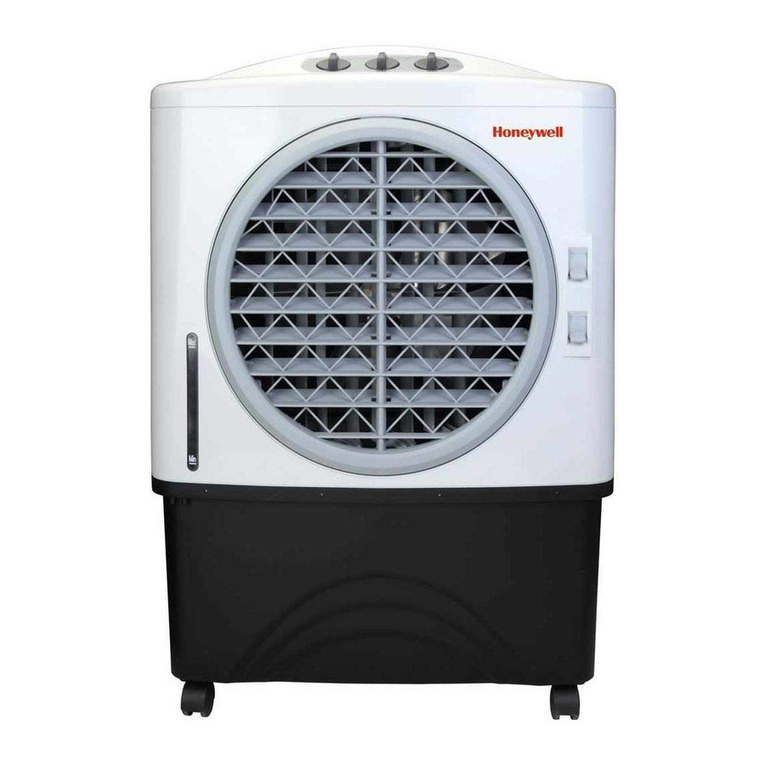
Honeywell
Honeywell CL48PM user manual
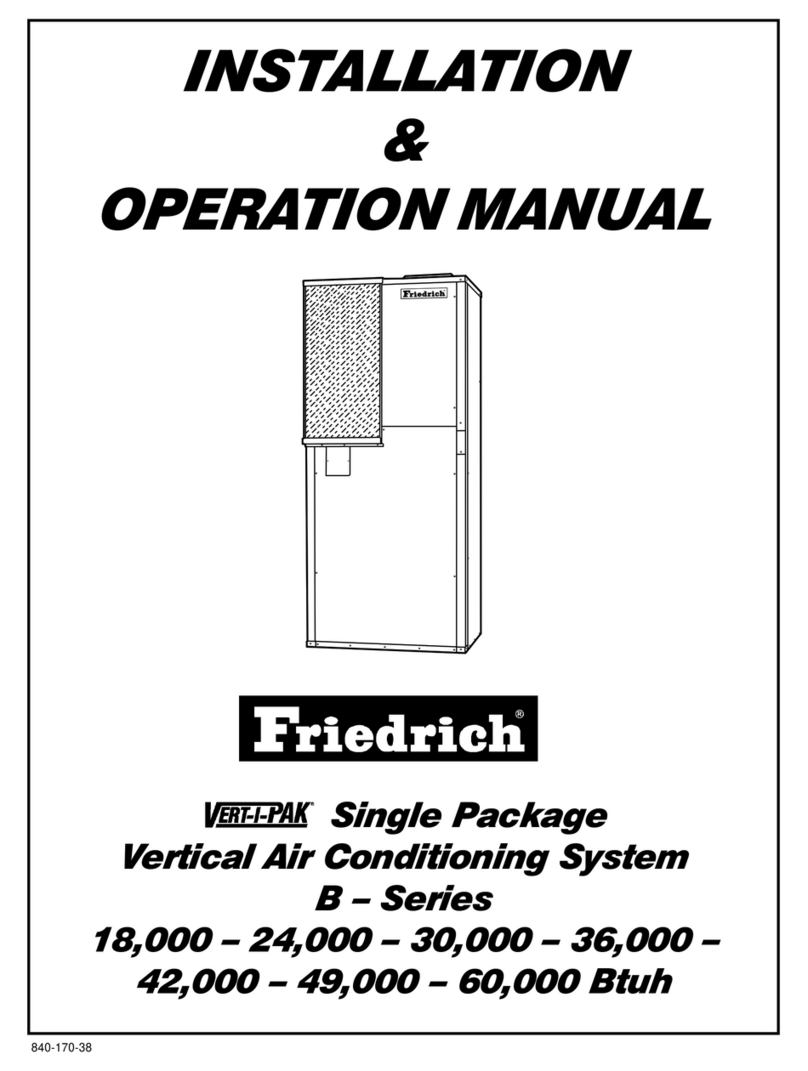
Friedrich
Friedrich 0 Installation and operation manual
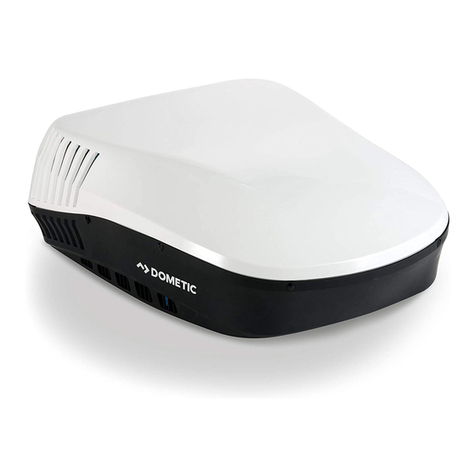
Dometic
Dometic Blizzard NXT H540315 installation instructions

Mitsubishi Electric
Mitsubishi Electric Mr. Slim MXZ-3A30NA installation manual
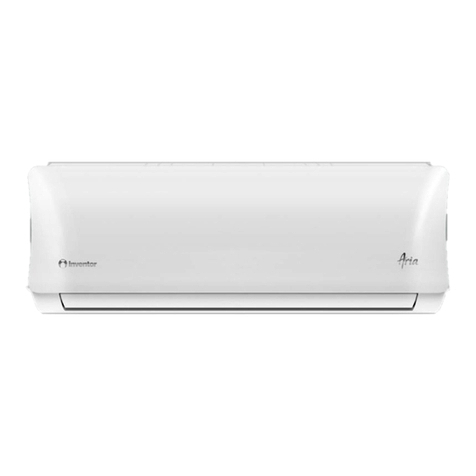
INVENTOR
INVENTOR AR4VI32-09WFI user manual

